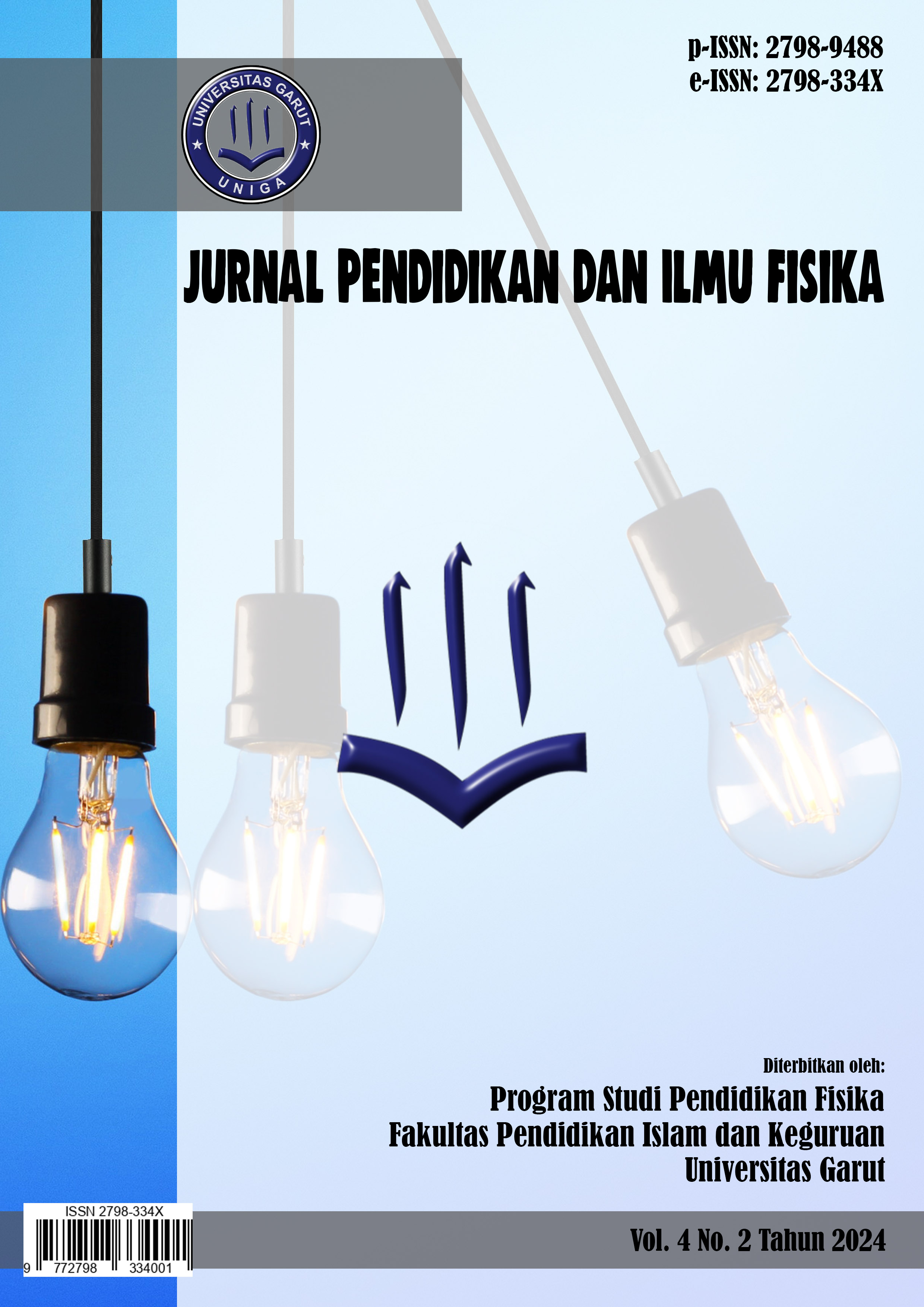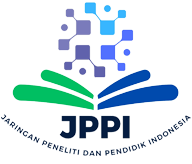The Use of Virtual Laboratories and Immersive Technology in Science Education in the Digital Era
DOI:
https://doi.org/10.52434/jpif.v4i2.42863Keywords:
Virtual Reality, Educational Technology, Augmented Reality, Science education, Virtual laboratories, Digital learningAbstract
This study aims to explore the use of virtual laboratories and immersive technologies, such as Virtual Reality (VR) and Augmented Reality (AR), in science education in the digital era. These technologies are believed to enhance student engagement, facilitate the understanding of complex concepts, and overcome the limitations of physical laboratories. The study employed a Systematic Literature Review (SLR) method by analyzing 13 selected articles from 574 initially identified studies in the Scopus and Scimago databases, published between 2015 and 2025. The analysis involved thematic coding, synthesis of findings, and comparison of research results to identify the benefits, challenges, and implementation trends. The findings indicate that virtual laboratories and immersive technologies can increase learning motivation, provide safe and flexible experimental experiences, and deepen the understanding of scientific concepts. However, challenges such as limited infrastructure, high costs of equipment procurement, and the need for teacher training remain significant obstacles. This study concludes that integrating virtual laboratories and immersive technologies has great potential to enrich science learning but requires policy support, infrastructure development, and enhanced teacher competencies. The implications emphasize the need for collaboration among educational institutions, policymakers, and technology providers to optimize their application in science education.
References
Adiyono, A., Hayat, E. W., Oktavia, E. D., & Prasetiyo, N. T. (2024). Learning interaction in the digital era: Technological innovations and education management strategies to enhance student engagement. Journal of Research in Instructional, 4(1), 205–221.
Ahmad, T. (2020). Scenario based approach to re-imagining future of higher education which prepares students for the future of work. Higher Education, Skills and Work-Based Learning, 10(1), 217–238.
Akinradewo, O., Hafez, M., Aliu, J., Oke, A., Aigbavboa, C., & Adekunle, S. (2025). Barriers to the Adoption of Augmented Reality Technologies for Education and Training in the Built Environment: A Developing Country Context. Technologies, 13(2), 62. In Press
Alalwan, N., Cheng, L., Al-Samarraie, H., Yousef, R., Ibrahim Alzahrani, A., & Sarsam, S. M. (2020). Challenges and Prospects of Virtual Reality and Augmented Reality Utilization among Primary School Teachers: A Developing Country Perspective. Studies in Educational Evaluation, 66, 100876. https://doi.org/https://doi.org/10.1016/j.stueduc.2020.100876
Al-Ansi, A. M., Jaboob, M., Garad, A., & Al-Ansi, A. (2023). Analyzing augmented reality (AR) and virtual reality (VR) recent development in education. Social Sciences & Humanities Open, 8(1), 100532.
AlGerafi, M. A. M., Zhou, Y., Oubibi, M., & Wijaya, T. T. (2023). Unlocking the potential: A comprehensive evaluation of augmented reality and virtual reality in education. Electronics, 12(18), 3953.
Ali, N., Ullah, S., & Khan, D. (2022). Interactive laboratories for science education: A subjective study and systematic literature review. Multimodal Technologies and Interaction, 6(10), 85.
Alnagrat, A. J. A., Ismail, R. C., & Idrus, S. Z. S. (2022). The Opportunities and challenges in virtual reality for virtual laboratories. Innovative Teaching and Learning Journal, 6(2), 73–89.
Bogusevschi, D., Muntean, C., & Muntean, G.-M. (2020). Teaching and learning physics using 3D virtual learning environment: A case study of combined virtual reality and virtual laboratory in secondary school. Journal of Computers in Mathematics and Science Teaching, 39(1), 5–18.
Brown, C. E., Alrmuny, D., Williams, M. K., Whaley, B., & Hyslop, R. M. (2021). Visualizing molecular structures and shapes: A comparison of virtual reality, computer simulation, and traditional modeling. Chemistry Teacher International, 3(1), 69–80.
Calvert, J., & Abadia, R. (2020). Impact of immersing university and high school students in educational linear narratives using virtual reality technology. Computers & Education, 159, 104005. https://doi.org/https://doi.org/10.1016/j.compedu.2020.104005
Caño de las Heras, S., Kensington-Miller, B., Young, B., Gonzalez, V., Krühne, U., Mansouri, S. S., & Baroutian, S. (2021). Benefits and challenges of a virtual laboratory in chemical and biochemical engineering: Students’ experiences in fermentation. Journal of Chemical Education, 98(3), 866–875.
Christopoulos, A., Conrad, M., & Shukla, M. (2018). Increasing student engagement through virtual interactions: How? Virtual Reality, 22(4), 353–369.
Dargan, S., Bansal, S., Kumar, M., Mittal, A., & Kumar, K. (2023). Augmented reality: A comprehensive review. Archives of Computational Methods in Engineering, 30(2), 1057–1080.
Dasopang, M. D. (2021). Effectivity of interactive multimedia with theocentric approach to the analytical thinking skills of elementary school students in science learning. Premiere Educandum: Jurnal Pendidikan Dasar Dan Pembelajaran, 11(2), 215–226.
Fadillah, Z. I. (2024). Pentingnya pendidikan stem (sains, teknologi, rekayasa, dan matematika) di abad-21. JSE Journal Sains and Education, 2(1), 1–8.
Fisher, M. M., & Baird, D. E. (2020). Humanizing user experience design strategies with NEW technologies: AR, VR, MR, ZOOM, ALLY and AI to support student engagement and retention in higher education. In International perspectives on the role of technology in humanizing higher education (pp. 105–129). Emerald Publishing Limited.
Fitrianto, I., & Saif, A. (2024). The role of virtual reality in enhancing Experiential Learning: a comparative study of traditional and immersive learning environments. International Journal of Post Axial: Futuristic Teaching and Learning, 97–110.
García‐Robles, P., Cortés‐Pérez, I., Nieto‐Escámez, F. A., García‐López, H., Obrero‐Gaitán, E., & Osuna‐Pérez, M. C. (2024). Immersive virtual reality and augmented reality in anatomy education: A systematic review and meta‐analysis. Anatomical Sciences Education, 17(3), 514–528. https://doi.org/10.1002/ase.2397
Haleem, A., Javaid, M., Qadri, M. A., & Suman, R. (2022). Understanding the role of digital technologies in education: A review. Sustainable Operations and Computers, 3, 275–285.
Hariyono, H. (2023). Penggunaan teknologi augmented reality dalam pembelajaran ekonomi: Inovasi untuk meningkatkan keterlibatan dan pemahaman siswa. JIIP-Jurnal Ilmiah Ilmu Pendidikan, 6(11), 9040–9050.
Heradio, R., De La Torre, L., Galan, D., Cabrerizo, F. J., Herrera-Viedma, E., & Dormido, S. (2016). Virtual and remote labs in education: A bibliometric analysis. Computers & Education, 98, 14–38.
Iskandar, A., Winata, W., Kurdi, M. S., Sitompul, P. H. S., Kurdi, M. S., Nurhayati, S., Hasanah, M., Arisa, M. F., & Haluti, F. (2023). Peran teknologi dalam dunia pendidikan. Yayasan Cendekiawan Inovasi Digital Indonesia.
Kuhail, M. A., ElSayary, A., Farooq, S., & Alghamdi, A. (2022). Exploring immersive learning experiences: A survey. Informatics, 9(4), 75.
Liberatore, M. J., & Wagner, W. P. (2021). Virtual, mixed, and augmented reality: a systematic review for immersive systems research. Virtual Reality, 25(3), 773–799.
Lindgren, R., Tscholl, M., Wang, S., & Johnson, E. (2016). Enhancing learning and engagement through embodied interaction within a mixed reality simulation. Computers & Education, 95, 174–187.
Liu, R., Wang, L., Lei, J., Wang, Q., & Ren, Y. (2020). Effects of an immersive virtual reality‐based classroom on students’ learning performance in science lessons. British Journal of Educational Technology, 51(6), 2034–2049.
McKnight, K., O’Malley, K., Ruzic, R., Horsley, M. K., Franey, J. J., & Bassett, K. (2016). Teaching in a Digital Age: How Educators Use Technology to Improve Student Learning. Journal of Research on Technology in Education, 48(3), 194–211. https://doi.org/10.1080/15391523.2016.1175856
Mohamed Shaffril, H. A., Samsuddin, S. F., & Abu Samah, A. (2021). The ABC of systematic literature review: the basic methodological guidance for beginners. Quality & Quantity, 55, 1319–1346.
Papanastasiou, G., Drigas, A., Skianis, C., Lytras, M., & Papanastasiou, E. (2019). Virtual and augmented reality effects on K-12, higher and tertiary education students’ twenty-first century skills. Virtual Reality, 23(4), 425–436. https://doi.org/10.1007/s10055-018-0363-2
Pellas, N., Kazanidis, I., & Palaigeorgiou, G. (2020). A systematic literature review of mixed reality environments in K-12 education. Education and Information Technologies, 25(4), 2481–2520.
Pellas, N., Mystakidis, S., & Kazanidis, I. (2021). Immersive Virtual Reality in K-12 and Higher Education: A systematic review of the last decade scientific literature. Virtual Reality, 25(3), 835–861.
Potkonjak, V., Gardner, M., Callaghan, V., Mattila, P., Guetl, C., Petrović, V. M., & Jovanović, K. (2016). Virtual laboratories for education in science, technology, and engineering: A review. Computers & Education, 95, 309–327. https://doi.org/https://doi.org/10.1016/j.compedu.2016.02.002
Pramanik, S. (2024). Immersive Innovations: Exploring the Use of Virtual and Augmented Reality in Educational Institutions. In Augmented Reality and the Future of Education Technology (pp. 66–85). IGI Global.
Rokhsaritalemi, S., Sadeghi-Niaraki, A., & Choi, S.-M. (2020). A review on mixed reality: Current trends, challenges and prospects. Applied Sciences, 10(2), 636.
Rosli, R., & Ishak, N. A. (2024). Integration of Virtual Labs in Science Education: A Systematic Literature Review. Jurnal Pendidikan Sains Dan Matematik Malaysia, 14(1), 81–103.
Salar, R., Arici, F., Caliklar, S., & Yilmaz, R. M. (2020). A model for augmented reality immersion experiences of university students studying in science education. Journal of Science Education and Technology, 29, 257–271.
Sauer, P. C., & Seuring, S. (2023). How to conduct systematic literature reviews in management research: a guide in 6 steps and 14 decisions. Review of Managerial Science, 17(5), 1899–1933.
Tene, T., Marcatoma Tixi, J. A., Palacios Robalino, M. de L., Mendoza Salazar, M. J., Vacacela Gomez, C., & Bellucci, S. (2024). Integrating immersive technologies with STEM education: a systematic review. Frontiers in Education, 9, 1410163.
Timotheou, S., Miliou, O., Dimitriadis, Y., Sobrino, S. V., Giannoutsou, N., Cachia, R., Monés, A. M., & Ioannou, A. (2023). Impacts of digital technologies on education and factors influencing schools’ digital capacity and transformation: A literature review. Education and Information Technologies, 28(6), 6695–6726.
Valverde-Berrocoso, J., Garrido-Arroyo, M. del C., Burgos-Videla, C., & Morales-Cevallos, M. B. (2020). Trends in educational research about e-learning: A systematic literature review (2009–2018). Sustainability, 12(12), 5153.
Van Dinter, R., Tekinerdogan, B., & Catal, C. (2021). Automation of systematic literature reviews: A systematic literature review. Information and Software Technology, 136, 106589.
Villena-Taranilla, R., Diago, P. D., & Colomer Rubio, J. C. (2025). Virtual Reality as a Pedagogical Tool: Motivation and Perception in Teacher Training for Social Sciences and History in Primary Education. Education Sciences, 15(4), 493. https://doi.org/10.3390/educsci15040493 In Press
Xiong, J., Hsiang, E.-L., He, Z., Zhan, T., & Wu, S.-T. (2021). Augmented reality and virtual reality displays: emerging technologies and future perspectives. Light: Science & Applications, 10(1), 216.
Yang, C., Zhang, J., Hu, Y., Yang, X., Chen, M., Shan, M., & Li, L. (2024). The impact of virtual reality on practical skills for students in science and engineering education: a meta-analysis. International Journal of STEM Education, 11(1), 28. https://doi.org/10.1186/s40594-024-00487-2
Yılmaz, A. (2021). The effect of technology integration in education on prospective teachers’ critical and creative thinking, multidimensional 21st century skills and academic achievements. Participatory Educational Research, 8(2), 163–199.
Yılmaz, Ö. (2023). The role of technology in modern science education. Current Research in Education; Baltacı, Ö., Ed.; Özgür Publications: Gaziantep, Turkey, 6, 35–60.
Zhai, X. (2021). Practices and theories: How can machine learning assist in innovative assessment practices in science education. Journal of Science Education and Technology, 30(2), 139–149.
Downloads
Published
Issue
Section
License
Copyright (c) 2024 Novi Silvia Nurroniah, Taufiq Al Farizi

This work is licensed under a Creative Commons Attribution 4.0 International License.

























